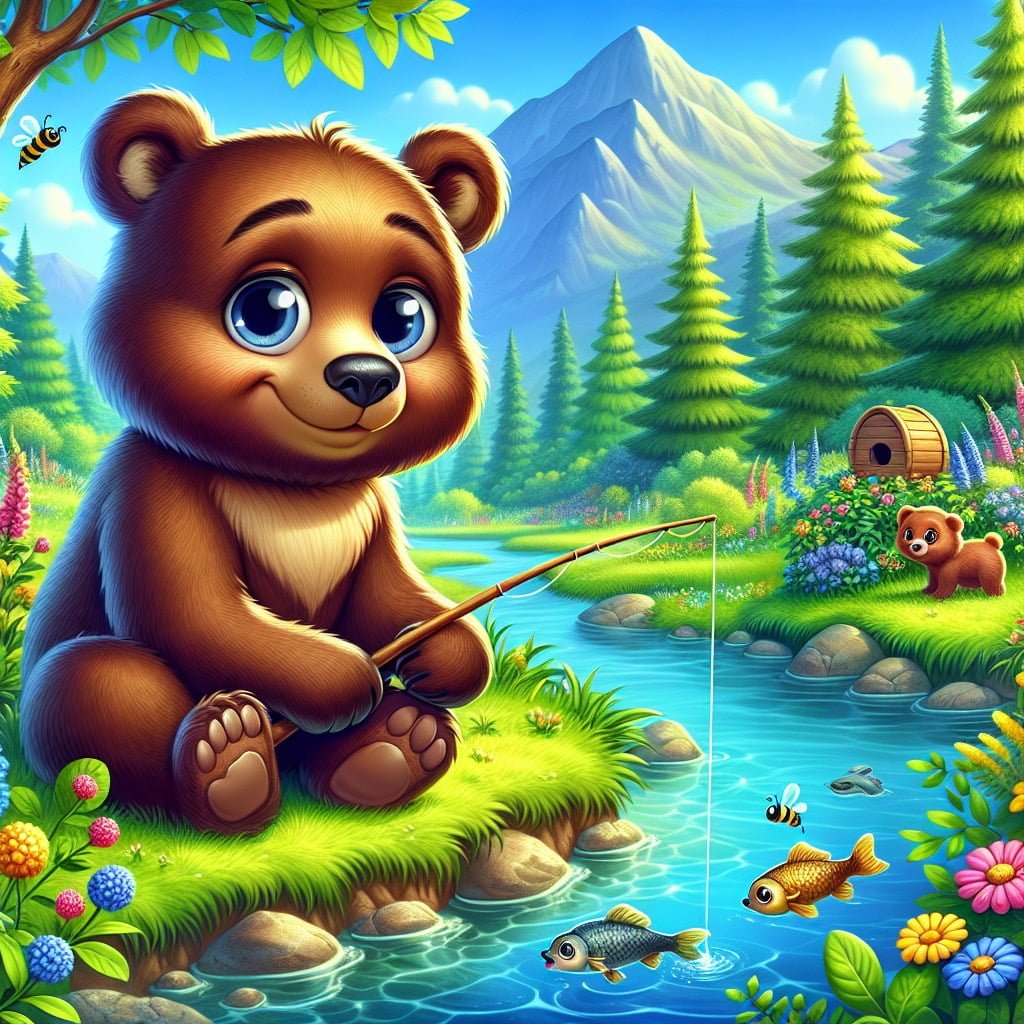Welcome to our fascinating blog post filled with fun and interesting Rabbit Facts For Kids! Whether you’re a young child curious about these adorable creatures or an older kid looking to learn more about rabbits, this post is packed with exciting information about these fluffy animals. From their incredible hearing and expert jumping abilities to their unique ways of communicating and prolific breeding habits, there is so much to discover about rabbits. So sit back, relax, and get ready to dive into the wonderful world of these lovable lagomorphs!
Rabbit Facts For Kids
1. Rabbits Have Incredible Hearing
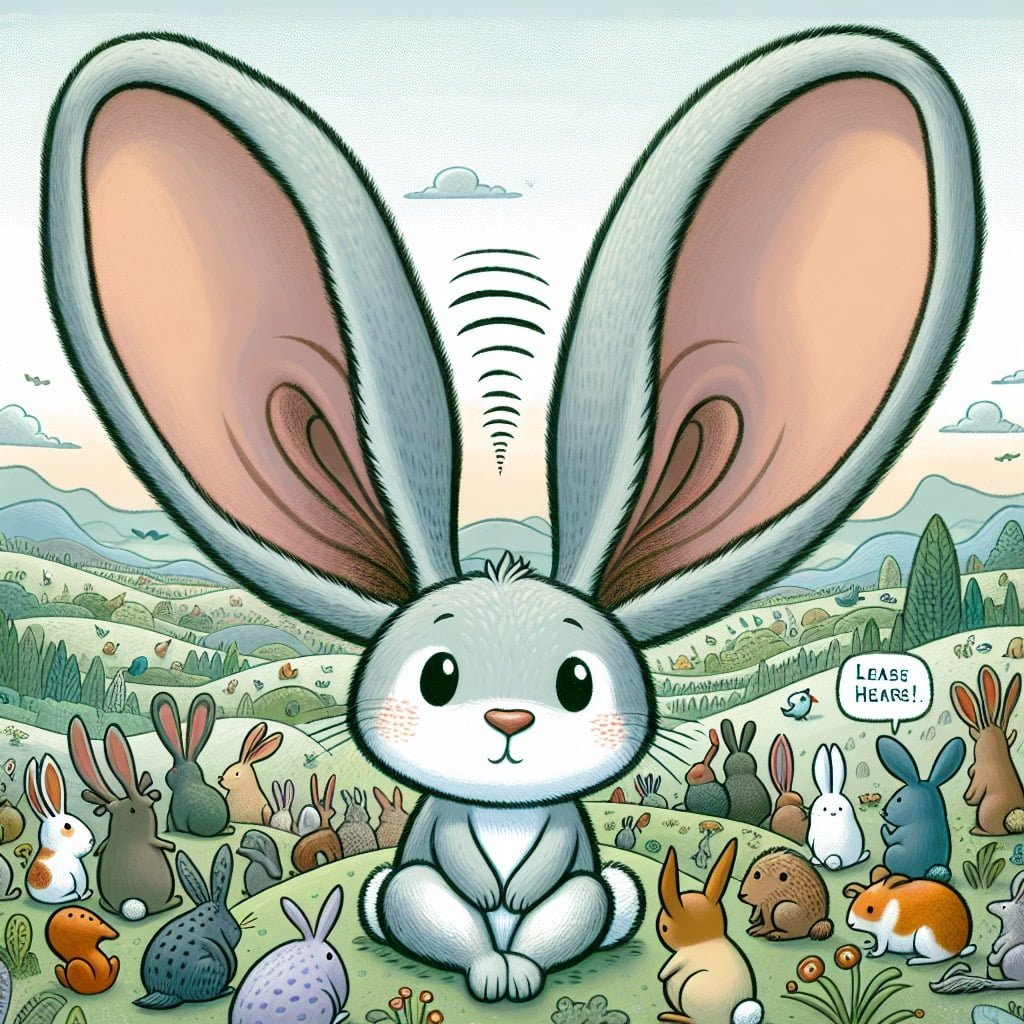
For younger kids: Rabbits can hear really well, even when they’re hopping around!
For older kids: Rabbit’s large ears are not just for show – they can rotate independently to detect sounds from all directions, including predators.
Detailed explanation:Rabbits are fascinating creatures, especially when it comes to their sensory abilities. One of the most impressive traits of rabbits is their incredible hearing. In fact, rabbits have some of the best hearing among all land animals.
Rabbits have large, upright ears that are covered in a thin layer of fur. These ears are not just for show – they play a crucial role in helping rabbits detect predators and other dangers in their environment. Rabbits can rotate their ears in almost any direction, allowing them to pinpoint the source of a sound with incredible accuracy. This is particularly important for rabbits, as they are prey animals and need to be constantly on alert for any potential threats.
In addition to their ability to detect sounds with precision, rabbits can also hear a wide range of frequencies. They can pick up on sounds that are too high-pitched for humans to hear, as well as sounds that are too low for us to detect. This keen sense of hearing helps rabbits communicate with each other through a series of vocalizations, such as grunts, thumps, and even purring.
Overall, the incredible hearing abilities of rabbits are essential for their survival in the wild. By being able to hear and locate potential dangers quickly and accurately, rabbits are better equipped to evade predators and stay safe. So, next time you see a rabbit twitch its ears, remember that it’s not just a cute quirk – it’s a key part of their survival strategy.
Rabbit Facts For Kids
2. A Group of Rabbits is Called a Warren
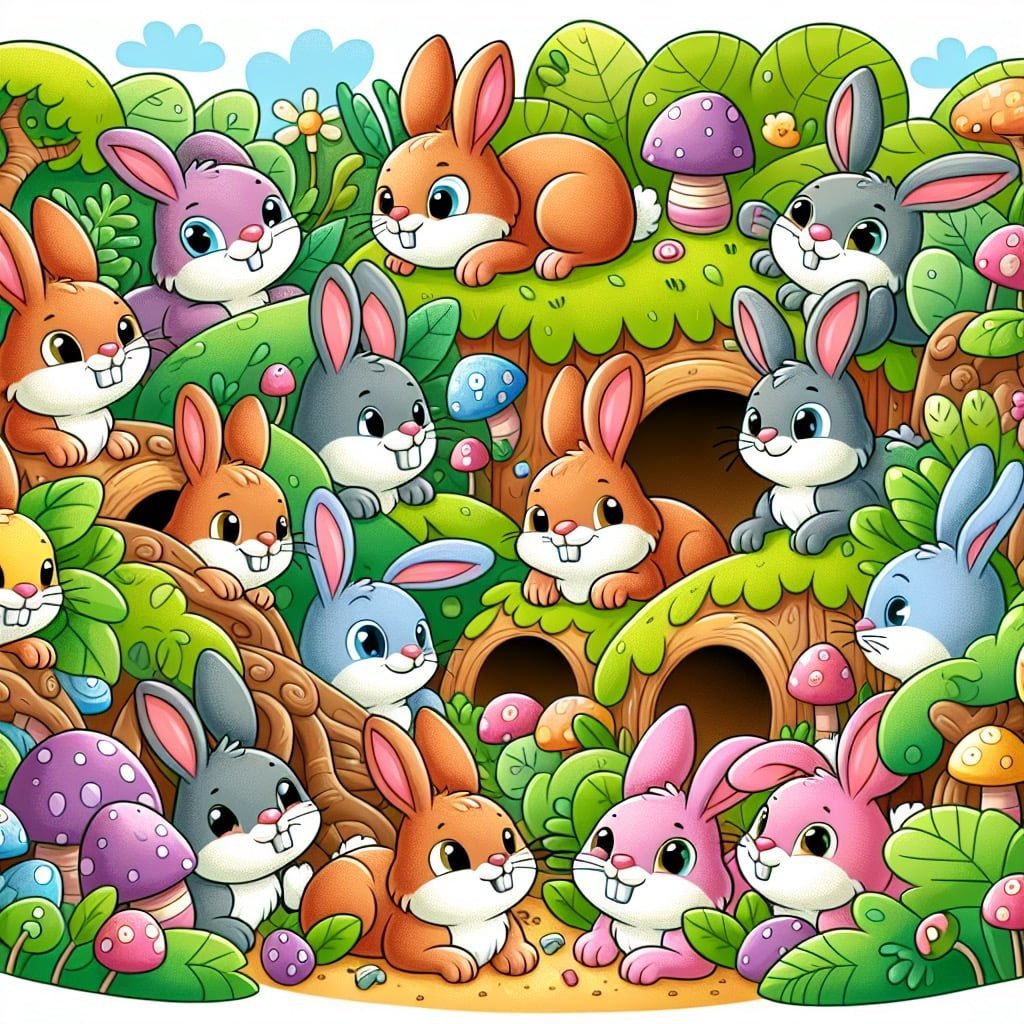
For younger kids: When many rabbits are together, it’s called a warren!
For older kids: A rabbit warren is a system of interconnected burrows where rabbits live, breed, and seek shelter, typically found underground.
Detailed explanation:Rabbits are adorable and social creatures that are known for living in groups called warrens. In fact, a group of rabbits is specifically referred to as a warren. This social structure allows rabbits to communicate with one another, share resources, and protect themselves from predators.
Within a warren, rabbits establish a hierarchy based on dominance. The dominant rabbits, usually the older and larger ones, have access to the best food and sleeping spots, while the subordinates must wait their turn. This hierarchy helps to maintain order and minimize conflicts within the group.
Rabbits are also known for their extensive burrowing behavior, which is essential for creating and maintaining a warren. These burrows provide shelter from inclement weather, predators, and other threats. They also serve as breeding grounds, with female rabbits (does) giving birth to their young (kits) inside the safety of the warren.
In addition to serving as a place of protection, warrens also act as a central hub for social interaction among rabbits. They communicate with each other through various vocalizations, body language, and scent markings. This communication helps to reinforce bonds within the group and ensure the overall well-being of the warren.
In conclusion, understanding that a group of rabbits is called a warren provides valuable insight into the social behavior and lifestyle of these fascinating creatures. By living together in groups, rabbits are able to thrive in their environment, share resources, and protect each other from harm. Rabbit Facts For Kids are indeed captivating and educational for anyone interested in learning more about these charming animals.
Rabbit Facts For Kids
3. Rabbits are Crepuscular

For younger kids: Rabbits are most active during dawn and dusk!
For older kids: Crepuscular animals like rabbits are most active during twilight hours, giving them a survival advantage by avoiding extreme temperatures and potential predators.
Detailed explanation:Rabbits are crepuscular animals, which means they are most active during dawn and dusk. This behavior is actually beneficial for rabbits in the wild, as it allows them to avoid predators that are more active during the day or night. By being active during these twilight hours, rabbits can take advantage of the low light to forage for food while minimizing their risk of being hunted.
For kids who are interested in learning about rabbits, understanding their crepuscular behavior can be fascinating. It allows children to appreciate the adaptability of these small mammals and how they have evolved to survive in the wild. By knowing that rabbits are most active during specific times of the day, kids can also learn about the importance of respecting wildlife and not disturbing animals during their active periods.
Parents and educators can use this Rabbit Facts For Kids topic to engage children in discussions about animal behavior, adaptations, and the natural world. This fact can also spark curiosity in children to learn more about different animal species and their unique behaviors. By teaching kids about rabbits being crepuscular, we can instill a sense of wonder and appreciation for nature in the next generation. Additionally, understanding this behavior can also lead to discussions about conservation efforts to protect wildlife habitats and ensure the survival of crepuscular animals like rabbits.
Rabbit Facts For Kids
4. Rabbits are Expert Jumpers
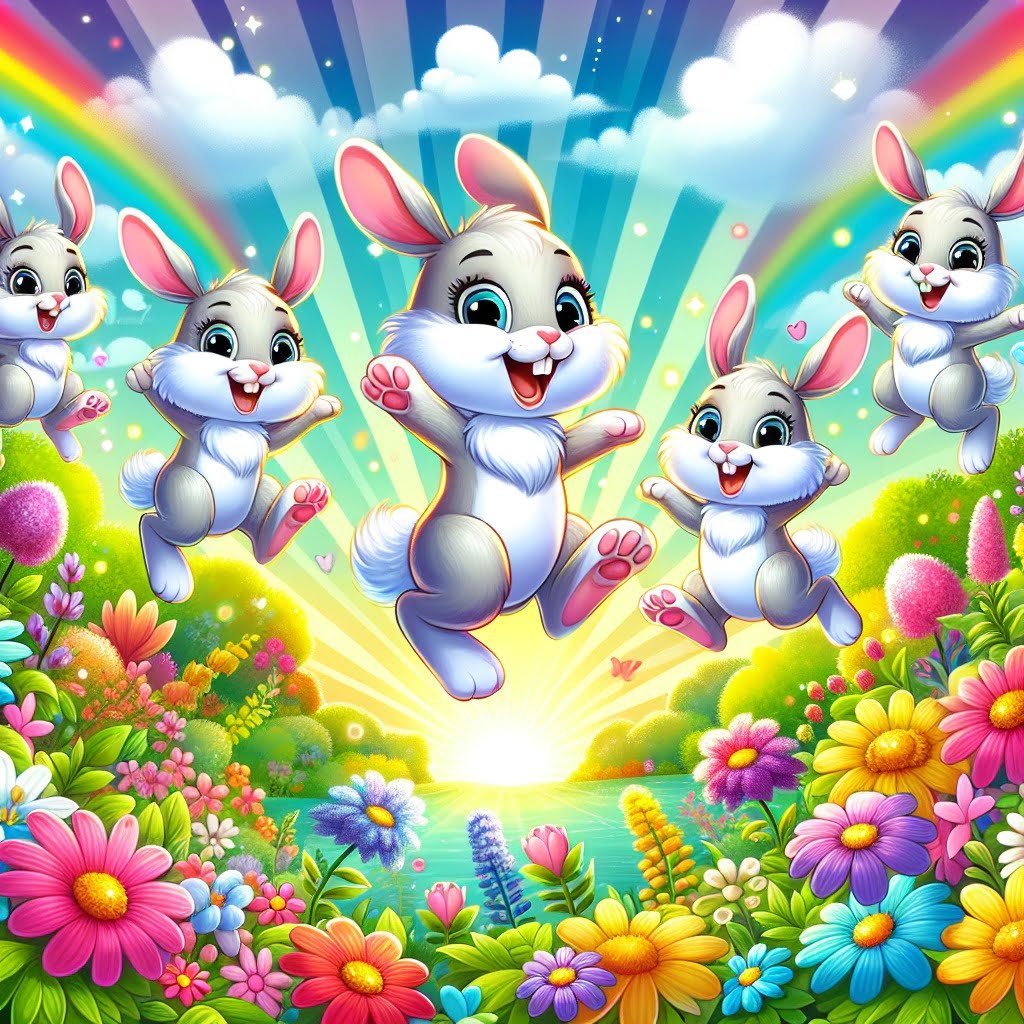
For younger kids: Rabbits can jump really high to hop around and play!
For older kids: Rabbits’ powerful hind legs allow them to jump up to 36 inches in height and 10 feet in length, aiding in escaping predators and exploring their environment.
Detailed explanation:Rabbits are truly fascinating animals, especially when it comes to their incredible jumping abilities. As highlighted in “Rabbit Facts For Kids,” one of the interesting facts about rabbits is that they are expert jumpers. In fact, rabbits are known to possess powerful hind legs that allow them to leap great distances with precision and speed.
One of the main reasons behind a rabbit’s impressive jumping skills is their anatomical structure. Their hind limbs are much stronger and larger than their forelimbs, which gives them the necessary power to propel themselves into the air. Additionally, rabbits have a unique skeletal structure that is adapted for jumping, with longer hind leg bones and strong muscles that enable them to generate the force needed to make those high and far jumps.
When a rabbit jumps, it can reach heights of up to 3 feet and lengths of over 9 feet in a single leap. This ability comes in handy for rabbits in the wild, as it allows them to quickly escape from predators or navigate challenging terrains such as dense vegetation or uneven ground.
Furthermore, jumping is not only an essential survival skill for rabbits, but it also serves other purposes such as communication and play. In the wild, rabbits use jumping as a means to signal danger to their fellow rabbits or to establish dominance within their social hierarchy. In a domestic setting, rabbits often engage in playful jumping behaviors as a form of exercise and entertainment.
In conclusion, the fact that rabbits are expert jumpers illustrates their remarkable agility and adaptability in their natural environment. Their impressive jumping abilities not only contribute to their survival but also add to their charm and appeal as beloved pets.
Rabbit Facts For Kids
5. A Rabbit’s Teeth Never Stop Growing

For younger kids: Rabbits need to chew a lot to keep their teeth from getting too long!
For older kids: Rabbit’s teeth grow continuously throughout their lives, necessitating constant gnawing on fibrous foods to prevent overgrowth and dental issues.
Detailed explanation:Rabbit Facts For Kids: One interesting characteristic of rabbits is that their teeth never stop growing. This is known as “open-rooted teeth” and is a common trait among rodents and lagomorphs, which includes rabbits. The reason for this continuous growth is that rabbits have a diet that consists mainly of fibrous plants and grasses, which can wear down their teeth quickly. To ensure that they can continue to effectively grind and chew their food, their teeth must constantly grow throughout their lives.
In order to prevent their teeth from becoming overgrown, rabbits have evolved a clever solution. They have teeth that are continuously erupting from the roots and are constantly pushing the older tooth forward. This process allows the rabbit’s teeth to naturally wear down as they chew on tough vegetation. Additionally, rabbits also have a specialized set of incisors in the front of their mouths that are particularly good at slicing through grasses and other tough plant material.
It is important for rabbit owners to provide their pets with a diet that helps to naturally wear down their teeth. This includes providing plenty of hay and fresh vegetables for them to chew on. In some cases, if a rabbit’s teeth become overgrown, it can lead to serious health issues, such as difficulty eating and potential infections. Therefore, regular check-ups with a veterinarian experienced in rabbit dentistry are crucial for maintaining the overall health and well-being of these adorable animals.
In conclusion, the fact that a rabbit’s teeth never stop growing is a fascinating aspect of their biology that highlights their unique adaptations to their herbivorous diet. By understanding and accommodating this trait, rabbit owners can help ensure that their furry friends stay happy and healthy for years to come.
Rabbit Facts For Kids
6. Rabbits Have a Unique Way of Communicating
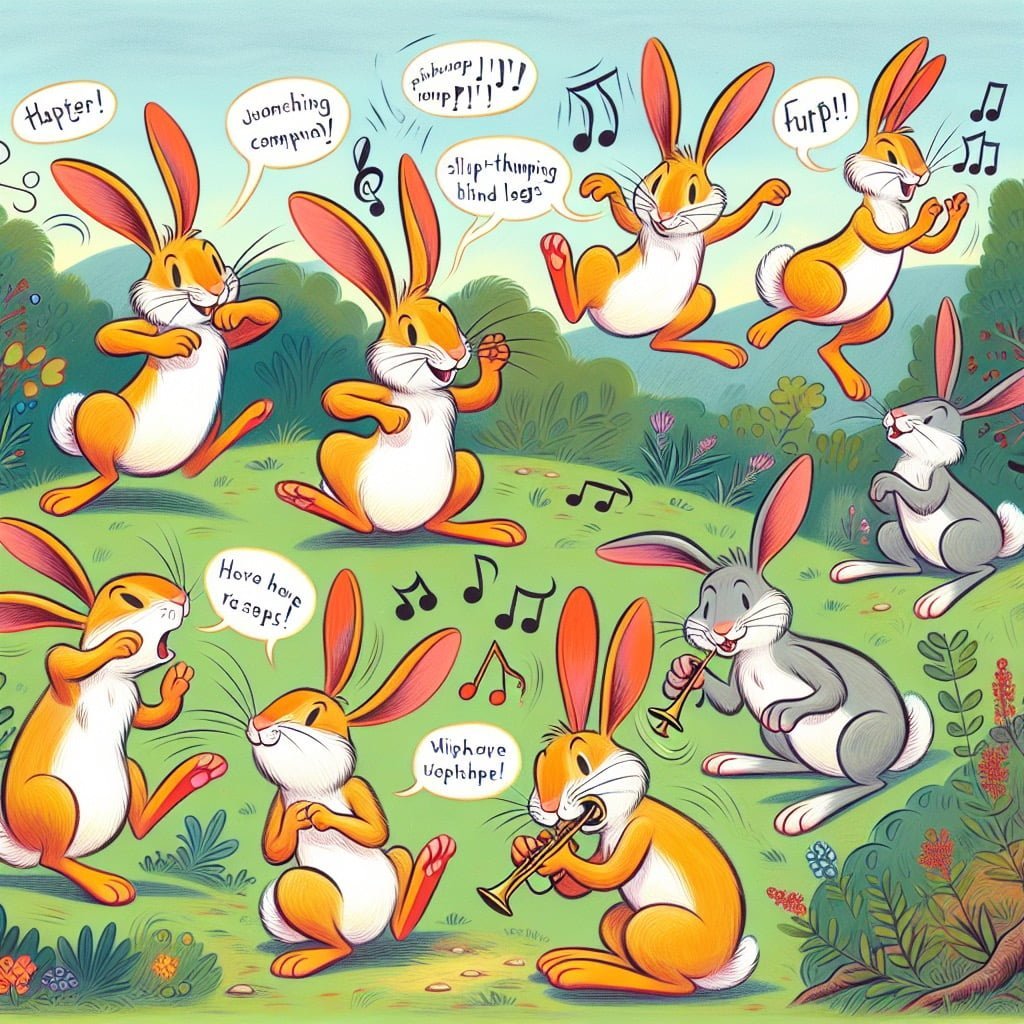
For younger kids: Rabbits thump their back feet to tell others when they’re scared!
For older kids: Apart from thumping, rabbits use a variety of body language cues and vocalizations to communicate with each other and with their human companions.
Detailed explanation:Rabbits are fascinating creatures that have a unique way of communicating with each other. This ability is essential for their survival in the wild and plays a significant role in their social interactions. One way rabbits communicate is through body language. For example, when a rabbit is feeling scared or threatened, it may thump its hind legs on the ground to alert other rabbits in the vicinity of potential danger. This behavior is known as thumping, and it serves as a warning signal to other rabbits to take cover or be on high alert.
Another important form of communication among rabbits is through vocalizations. While many people may think rabbits are silent animals, they actually make a variety of sounds to convey different messages. For instance, rabbits may squeal when they are in pain, grunt when they are annoyed, or purr softly when they are content. By paying attention to these vocal cues, rabbits can communicate their needs and emotions to other members of their group.
In addition to body language and vocalizations, rabbits also use scent as a form of communication. Rabbits have scent glands located on their chin, cheeks, and paws, which they use to mark their territory and communicate with other rabbits. By rubbing their chin or cheeks on objects or other rabbits, they leave behind scent cues that convey information about their identity, social status, and reproductive status.
In conclusion, rabbits have a unique way of communicating through body language, vocalizations, and scent markings. Understanding these forms of communication is essential for anyone who wants to learn more about these fascinating animals and their behavior in the wild. Rabbit Facts For Kids are not only educational but also provide valuable insights into the world of these adorable creatures.
Rabbit Facts For Kids
7. The World’s Largest Rabbit is Over Four Feet Long
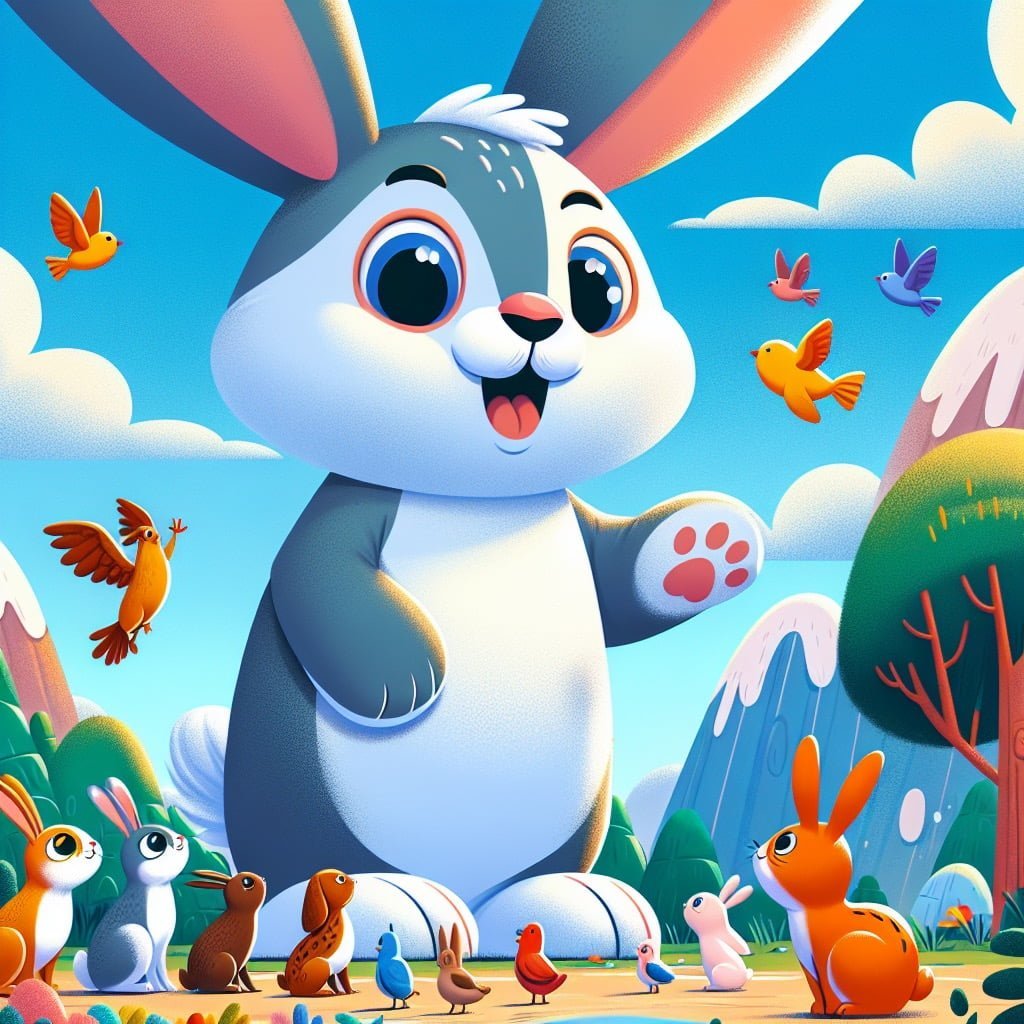
For younger kids: Some rabbits can grow really big—almost as tall as a three-year-old!
For older kids: The record for the world’s longest rabbit is held by a bunny named Darius, who measures over four feet in length and weighs around 50 pounds!
Detailed explanation:One fascinating rabbit fact that often captures the attention of children is that the world’s largest rabbit can grow to be over four feet long. This remarkable size is truly astounding, considering that the average domestic rabbit typically measures around 18 inches in length. The sheer magnitude of a rabbit reaching over four feet showcases the incredible diversity in the animal kingdom, even within a single species like rabbits.
The breed that holds the record for the world’s largest rabbit is the Continental Giant. These gentle giants can weigh up to 25 pounds and have a length that surpasses the four-foot mark. Their impressive size can be attributed to a combination of genetics, diet, and overall health. While genetics play a significant role in determining how large a rabbit can grow, providing a nutritious diet rich in fiber and essential nutrients is crucial for supporting growth and overall well-being.
For kids who are fascinated by rabbits, learning about the world’s largest rabbit can be both educational and entertaining. It showcases the wide range of sizes, shapes, and colors that rabbits can come in, sparking curiosity and appreciation for these unique animals. Whether as pets or in the wild, rabbits are truly captivating creatures that never fail to amaze with their diversity and adaptability.
In conclusion, the fact that the world’s largest rabbit can exceed four feet in length is a testament to the incredible variability within the rabbit species. Through proper care and attention, rabbits can reach impressive sizes, captivating kids and adults alike with their charm and uniqueness.
Keywords: Rabbit Facts For Kids
Rabbit Facts For Kids
8. Rabbits are Prolific Breeders

For younger kids: Rabbits can have lots of babies really quickly!
For older kids: Rabbits are known for their rapid breeding, with females able to give birth to a litter of 4-12 babies known as kits every 31 days if conditions are favorable.
Detailed explanation:Rabbits are known for their reputation as prolific breeders, making them one of the fastest multiplying animals in the world. This ability to reproduce quickly is crucial for their survival in the wild, where they are preyed upon by numerous predators. Female rabbits, known as does, can start reproducing as early as three to four months of age and can have multiple litters each year. In fact, a single pair of rabbits has the potential to produce over 1,000 offspring in just one year if left unchecked.
The reproductive cycle of rabbits is also quite unique. They are induced ovulators, which means that they ovulate in response to mating. This allows them to conceive again shortly after giving birth, leading to continuous breeding throughout the year. Additionally, rabbits have a short gestation period of about 28-31 days, allowing them to quickly replenish their numbers.
This prolific breeding behavior has made rabbits successful colonizers in new environments. When introduced to a new area with abundant resources and few predators, rabbits can quickly establish large populations. However, this rapid reproduction can also pose challenges in areas where they are considered invasive species, as their populations can quickly grow out of control and have negative impacts on the local ecosystem.
In conclusion, the fact that rabbits are prolific breeders is a key aspect of their biology that has enabled them to thrive in various environments. Their ability to reproduce quickly and adapt to changing conditions has ensured their survival as a species for millions of years.
Rabbit Facts For Kids
9. Rabbits Love to Eat Hay
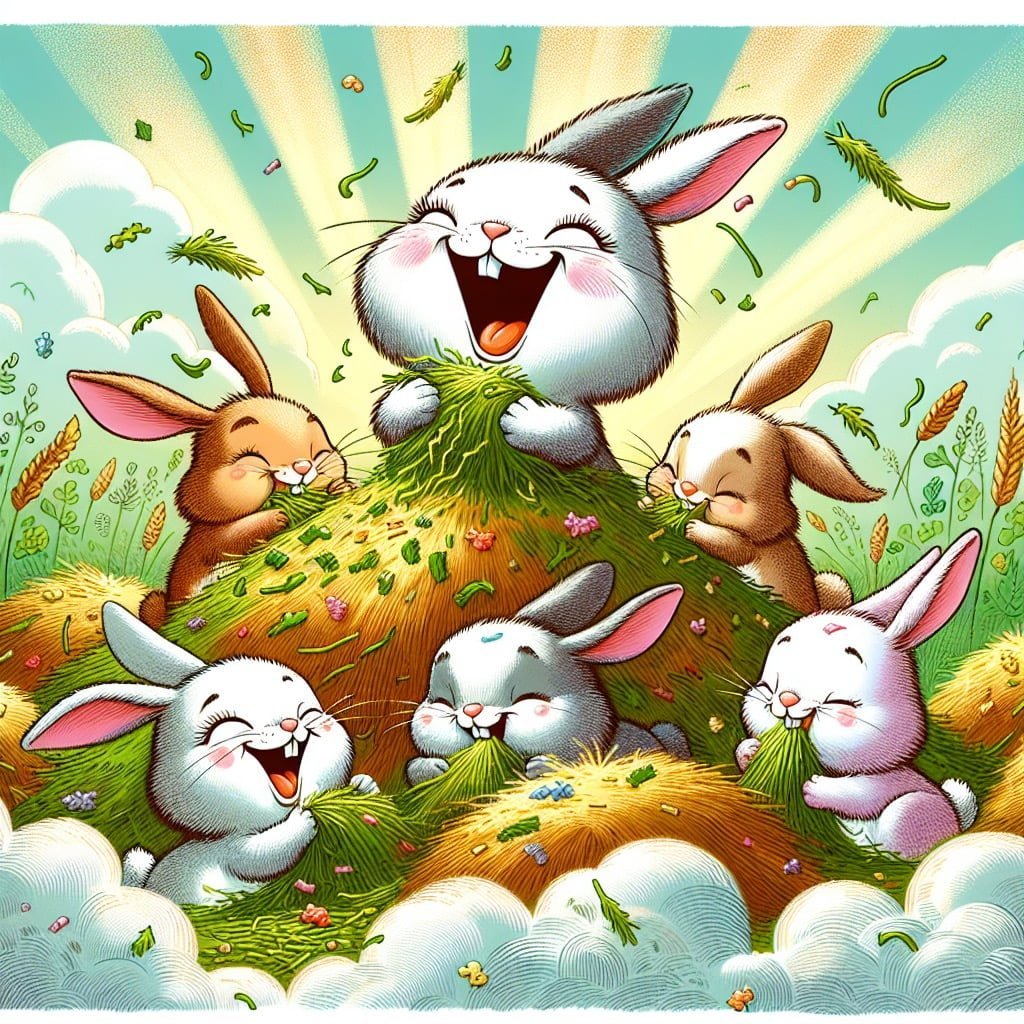
For younger kids: Rabbits munch on hay all day like it’s their favorite snack!
For older kids: A rabbit’s diet mainly consists of hay, which helps wear down their ever-growing teeth and provides essential fiber for a healthy digestive system.
Detailed explanation:Rabbits are herbivores, meaning that their diet primarily consists of plant-based foods. One of the staple foods in a rabbit’s diet is hay. Hay provides essential fiber that is crucial for their digestive health. Rabbits have a unique digestive system that requires a high-fiber diet to maintain proper gut function.
Hay also helps wear down a rabbit’s constantly growing teeth. Rabbits have teeth that continuously grow throughout their lives, so they need to chew on fibrous foods like hay to keep their teeth from becoming overgrown. In addition to hay, rabbits also enjoy eating a variety of fresh vegetables, fruits, and commercial rabbit pellets to ensure they receive a balanced diet.
For kids who have pet rabbits, feeding them hay is an important part of caring for their furry friends. Providing a constant supply of fresh hay not only keeps rabbits healthy, but it also encourages their natural foraging behaviors. Rabbits love to nibble and explore, and hay allows them to do so while also providing essential nutrients.
Overall, hay is an essential food for rabbits of all ages. It helps with digestion, dental health, and overall well-being. So, the next time you see a rabbit munching on a pile of hay, remember that it’s not just a tasty snack for them – it’s a vital part of their diet.
Rabbit Facts For Kids
10. Rabbits are Notrodent but Lagomorphs
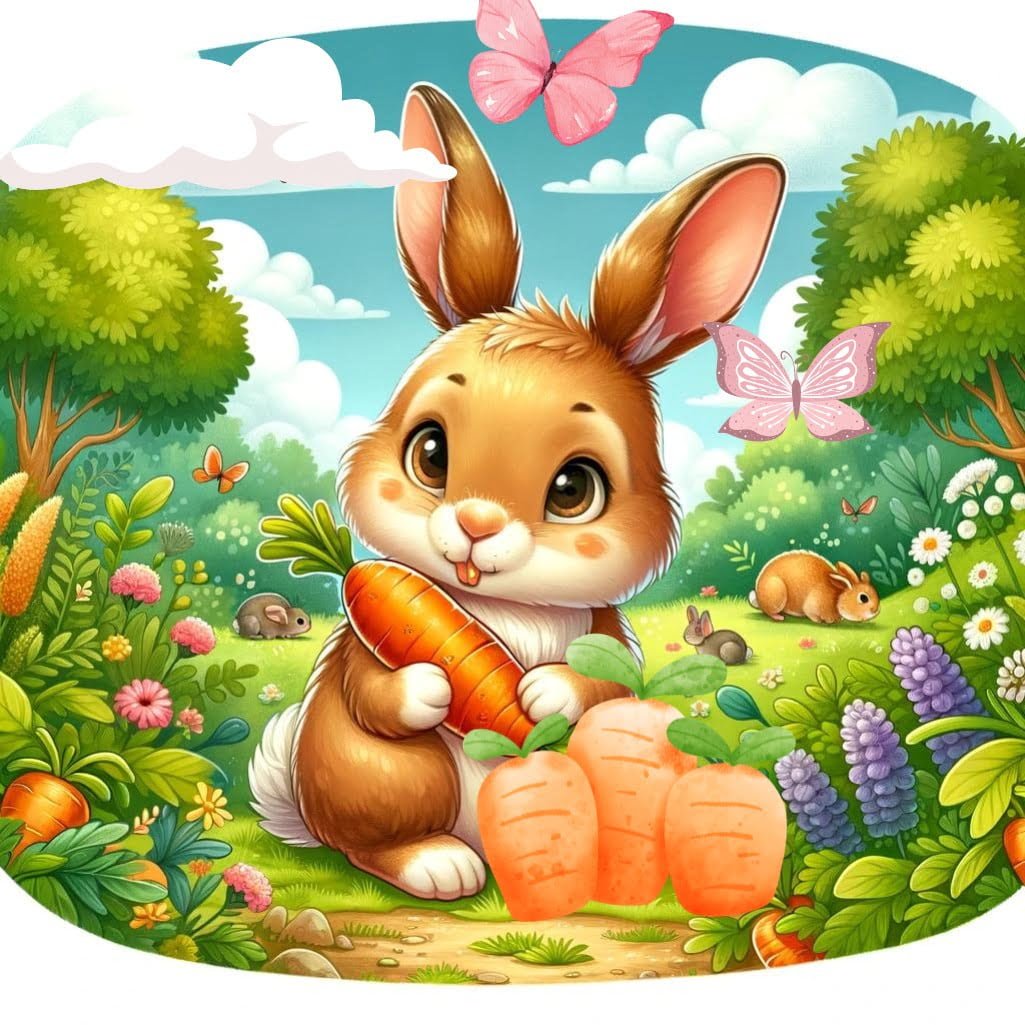
For younger kids: Rabbits are not mice—they’re special animals called lagomorphs!
For older kids: Despite sharing similarities with rodents, rabbits belong to the Lagomorpha order, distinguished by tooth structure and digestive system differences.
Detailed explanation:One interesting fact about rabbits that many people may not be aware of is that they are not rodents, as is commonly believed, but are actually classified as lagomorphs. While both rodents and lagomorphs belong to the order of mammals called Rodentia, they are separate and distinct groups.
One key difference between rodents and lagomorphs is their dental structure. Rodents have a pair of continuously growing incisors in their upper and lower jaws, while lagomorphs have an additional pair of smaller incisors located behind the larger ones. This extra set of incisors, known as peg teeth, helps lagomorphs efficiently grind down tough vegetation, which is a major component of their diet.
Another distinguishing feature of lagomorphs, including rabbits, is their digestive system. Lagomorphs have a unique digestive process that involves passing food through their digestive system twice in order to extract the maximum amount of nutrients from their plant-based diet. This process allows rabbits to efficiently break down cellulose, a tough plant material that many animals are unable to digest.
In addition to their dental and digestive differences, lagomorphs also have distinct behaviors and adaptations that set them apart from rodents. For example, rabbits are known for their ability to jump great distances using their powerful hind legs, as well as their tendency to burrow underground to create warrens for shelter and protection.
In conclusion, while rabbits may share some similarities with rodents, such as their small size and herbivorous diet, they are actually classified as lagomorphs due to their unique dental structure, digestive process, behaviors, and adaptations. By understanding these differences, we can gain a greater appreciation for the diversity and complexity of the animal kingdom.
Did you know?
Did you know that rabbits have a special way of showing affection by grooming each other’s fur?
Summary of Rabbit Facts For Kids
If you’re looking for fun and fascinating facts about rabbits to share with kids, look no further! This blog post covers everything from rabbits’ incredible hearing and unique ways of communication to their expert jumping abilities and love for munching on hay. Did you know that a group of rabbits is called a warren, or that rabbits are not rodents but belong to a special group called lagomorphs? With colorful images and simple explanations for both younger and older kids, this post is sure to educate and entertain young readers who are curious about these adorable and interesting animals. So dive in and discover more about the world of rabbits!
Sources and additional information for Rabbit Facts For Kids
WikipediaBritannicaSan Diego Zoo KidsThe Smithsonian InstitutionDK Find Out!Australian MuseumWorld Wildlife FundThe Nature ConservancyAnimal PlanetMonterey Bay AquariumPBS NatureSmithsonian’s National Zoo & Conservation Biology InstituteWorld Wildlife FundAnimal Diversity Web (University of Michigan)IUCN Red List of Threatened SpeciesThe Cornell Lab of Ornithology – All About BirdsNational Audubon SocietyEncyclopedia of LifeSeaWorld Parks & EntertainmentAustralian Museum – AnimalsEncyclopedia of Life




